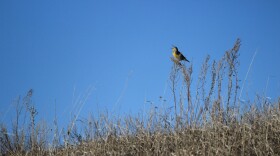I recently listened to a podcast about the ecological problems associated with feral pigs in Canada. These feral pigs have been called the most prolific invasive mammal in Canada, and the situation is being described as "spiraling out of control."
Pigs, of course, were introduced by early settlers. The Eurasian wild boar was introduced in the 1980s. Escaped or released wild boars, domestic pigs, or their hybrids are often referred to as feral pigs, wild pigs, or super pigs. They are firmly established in Alberta, Saskatchewan, and Manitoba, and have been confirmed in North Dakota on several occasions, beginning in 2007.
Feral pigs may become mature at 4-8 months, can breed in any season, and have multiple litters per year. They can also tolerate a wide range of environmental conditions, including North Dakota winters.
These pigs are increasing and expanding their range at an alarming rate. A University of Saskatchewan Ph.D. student described feral pigs as an “Ecological train wreck.” These animals are generalist and opportunistic omnivores, eating items ranging from grasses, forbs, roots, tubers, and fruits, to birds, bird eggs, small mammals, reptiles, insects, and the like. Their rooting and wallowing activities damage or may even kill vegetation, including mature trees, increase soil erosion, and degrade wetlands. Crops and livestock are also at risk.
An open season on feral pigs may seem like an easy and effective way to keep these animals under control. However, hunting or even implementing a bounty system has been ineffective. All it seems to do is cause members of a group scatter and alter their behavior, making them become more nocturnal and avoiding humans. It actually exacerbates the problem, making any effort by the authorities more difficult.
Please note that it is illegal to shoot feral pigs in North Dakota unless a person is protecting property or livestock. Anyone who observes or suspects the presence of feral pigs, for example tracks, or evidence of rooting or wallows, should call local law enforcement, the North Dakota Board of Animal Health, Game and Fish Department, or the U.S. Department of Agriculture Wildlife Services.
—
Further Reading:
- Avoiding Problems with Feral Pigs (North Dakota Game and Fish Department)
- Feral Pigs (North Dakota Department of Agriculture)
- Wild Pigs invade Canadian provinces-an emerging crisis for agriculture and the environment (University of Saskatchewan College of Agriculture and Bioresources)
- Wild Pigs (Canadian Council of Invasive Species)





